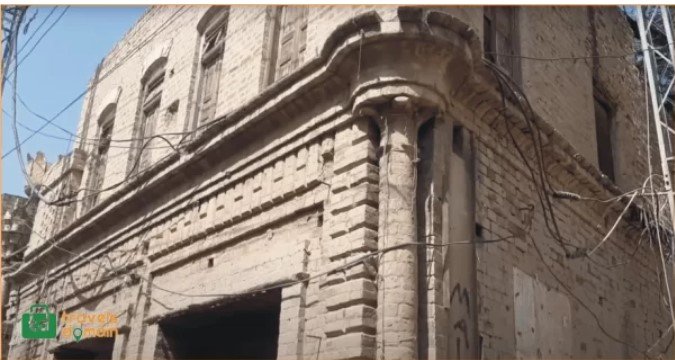Depalpur Fort is located in the historical and beautiful city of Dipalpur in the Okara district.
According to Rigvedic of India, the first name of this city was Saripur or Srinagar.
The name was later changed to Deepapur by Deepa Chand, brother of Raja Salwahan of Sialkot, after his son Raja Deepa. The name changed to Depalpur or Dipalpur over time.
According to the Rig Vedic of India, Dipalpur city is the oldest living city on the Indian subcontinent, which was destroyed many times but was rebuilt on its ruins each time.
Deepalpur is still present on the bosom of the earth with its full climate.
History of Depalpur Fort:

The Depalpur of the past was confined within the fort of Dipalpur, which had an area of about a hundred acres.
Two thousand years ago, when the Aryans entered the subcontinent, their abode was Sapat Sindhu, the land of seven rivers, in which Ravi, Sutlej, Chenab, Jhelum, Indus, Beas, and Kabul flowed.
Top 10 real estate companies in Islamabad
Among the famous civilizations of this period were Ajodhan (Pakpatan), Kuballa, and Dipalpur.
In the 13th and 14th centuries AD, Dipalpur played an important role in the defense of the Delhi Empire against the Mongols.
At that time Dipalpur was the only fort on the route from Khyber to Delhi.
According to famous historian Ibnash Chandradas’s book “History of Dipalpur by Mian Allah Dutta Naseem”, when was Dipalpur fort first built? There is no clear mention of it in history.
However, in the 14th century AD, Feroz Shah Tughluq repaired and rebuilt this strong fort for the last time.
Although the 25-foot-wide walls of Dipalpur Fort made of rare red bricks have collapsed, many stories are still alive today across these crumbling walls. Guard posts were built at the gates of the fort, which are still there today.
In the 12th century AD, when Ghiyasuddin Tughlaq was the ruler of Dipalpur, the Tartar flood also faced failure at the Dipalpur fort.
The fort suffered a lot of damage in this battle, which was repaired again by Ghiyasuddin Tughluq in 1244.
When Zahiruddin Babur invaded the subcontinent in 1526, he also faced the greatest resistance in the fort of Dipalpur, which he acknowledged in his book Tuzk-i Babri.
The Architecture of Depalpur Fort:
Dipalpur Fort has four gates. The eastern gate was named Delhi Gate, the western gate as Multani Gate, the northern gate Lahori Gate, and the southern gate Bikaneri Gate.
The east and west gates are still there, but the north and south gates have been demolished.
A spacious tunnel was also built inside the fort of Dipalpur, which not only had adequate provision of light and air but was wide enough that two horses could run through it at the same time.
Apart from this, a huge royal mosque was also built in it, which is still there today. The ruins of a temple still exist in the colony called Lalu Jasroy in Dipalpur Fort.
The Myth of Mother’s Curse:
There is a tradition about this temple that a boy named Lalu was buried alive there as a result of his mother’s curse.
A temple was built at the place where the boy sank into the ground. That temple is now defunct, but a small stone slab still stands as a marker at the site of Lalu’s drowning.
Adjacent to this temple was the entrance to a tunnel built by Feroz Tughluq, which is now closed. No one knows about the other side.
The fort also has a two-storied inn, with each room having words in Hindi, which may also be ‘nameplates’.
Some rooms of the inn are open where local people have settled. Many rooms are locked. Deepalpur Fort also had several Hindu temples, in which people from India used to come to worship.
But in 1992, when the Babri Masjid was martyred in India, the local people demolished these temples occupied them, and built their residences.
The population of this city, which is growing rapidly in modern times, is now around 14 lakhs. It has 55 Union Councils. This region is unparalleled in its historical status as well as its fertility.
There is a need for the government to pay attention to the fort, temples, Haveli Lakha, Bhuman Shah Mandir, and other important historical places in this city so that their historical status and structure can be maintained.


